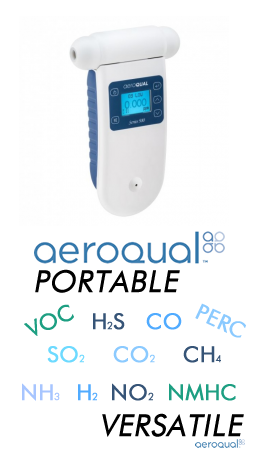Phosgene Information

Phosgene:
|
Other Names |
Carbonyl dichloride; Carbonic dichloride; Chloroformyl chloride |
|
Chemical Formula |
COCl2; CCl2O |
|
CAS Number |
75 – 44 – 5 |
|
Industry Uses |
Chemical Warfare; Chemical Laboratories; Pesticides |
|
Health Risks |
Irritation; Vomiting; Foamy Sputum; Dyspnea; Respiratory Damage; Death |
|
Vapor Pressure |
1.6 atm |
|
Water Solubility |
Slightly Soluble, may react |
|
Flammability |
Non-Flammable |
|
Odor |
Musty Hay |
What is Phosgene:
Phosgene is a colorless gas or low-boiling, volatile liquid. High concentrations may appear like a white or yellowish fog-like cloud. Its odor is suffocating and similar to musty or moldy hay. Phosgene is a highly toxic gas that has been used for chemical warfare. It is an insidious poison, as it is not irritating immediately even when fatal concentrations are inhaled. Phosgene is a chemical intermediate which is how it is most often encountered, though it is present in some pesticides. If heated under pressure, it can explode and rocket violently. It is not combustible. When heated to decomposition or on contact with water or steam, it can react to produce toxic and corrosive fumes. It reacts violently with aluminum, lithium, potassium, and sodium. It is stable in dry steel containers. Sodium bicarbonate can be used to neutralize liquid spills, and ammonia be used for gaseous spills.
Phosgene Exposure and Health Risks:
Phosgene is extremely dangerous and highly toxic by all routes of exposure. When contacted directly, skin burns and frost bite may occur. Inhaling low concentrations can cause irritation to the eyes and respiratory tract. It is a lung toxicant that causes damage to capillaries, bronchioles, and alveoli. Other symptoms are dry, burning throat, vomiting, cough, foamy sputum, dyspnea (difficulty breathing), chest pain, and cyanosis. Severe respiratory effects including pulmonary edema, emphysema, and death can occur after high concentration inhalation. Death can occur within 36 hours of exposure.
Regulations:
The table below summarizes the most-recent exposure limits.
|
Limit/Level |
Type |
Organization |
|
Not Recommended |
AEGL-1 (8 hrs) |
EPA |
|
0.04 ppm |
AEGL-2 (8 hrs) |
EPA |
|
0.09 ppm |
AEGL-3 (8 hrs) |
EPA |
|
100 ppb |
TWA (8 hrs) |
OSHA |
|
0.1 ppm |
TWA (8 hrs) |
NIOSH |
|
0.2 ppm |
C (15 min) |
NIOSH |
Measuring Phosgene:
Phosgene concentration in the air can be measured in units of parts per million (ppm). Many of our products have digital communication capabilities for easy monitoring and control. We carry portable and fixed Phosgene monitors and kits. All of our Phosgene products can be viewed HERE.
What type of component are you looking for?
| Fixed Mount | Handheld | Dissolved Kits: | Replacement Sensors: | Calibration Gas: | Rentals: |
 |
 |
 |
 |
 |
 |
All sensors require a yearly calibration to ensure your gas measurements are accurate and performing within manufacturer standards. This page is desiccated to the individual manufacturers we represent and their specific calibration procedures.
**Calibration Service Request Form **
|
Calibration costs do vary, see below to get an estimate: Calibration Fee: $150 Analyzer Calibration Fee: $300 PM Calibration Sensor Fee: $330 Genie Calibration Fee: $265 ATI Calibration Fee: $205 ** note that prices are subject to change per labor and parts required. |
Contact us for help choosing the right monitor for your application

















